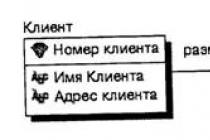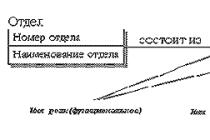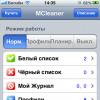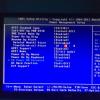TrendForce has been studying the global market for various equipment for 16 years, including the market of smartphone manufacturers. According to TrendForce, 1 billion 360 million smartphones were sold in the world in 2016. The ten most popular manufacturers (accounting for 81.1% of global smartphone sales) are presented in this ranking. It included seven Chinese brands, two South Korean and one American.
10th place. ZTE. The Chinese manufacturer in 2016 concentrated 3.5% of the global smartphone market, showing a slight increase compared to 2015, when it accounted for 3.4%. TrendForce, predicts that in 2017 the share of ZTE will decrease to 3%.
9th place. TCL. Chinese manufacturer whose smartphones are not featured on Russian market, controls 3.7% of the global market. In 2015, its share was the same, and in 2017, according to TrendForce forecast, it will decrease to 3.2%.

8th place. Lenovo. For the Chinese brand, well known to Russians, 2016 turned out to be unsuccessful: if in 2015 it was in 4th place in the world with a share of 5.4%, then in 2016 it dropped 4 positions down and only 3.7% fell to its share. world market. TrendForce forecast for 2017 is 3.8%.

7th place. Xiaomi (pronounced in Russian "Xiaomi"). Another popular brand in Russia also showed a decrease in sales compared to 2015: 3.7% of the market compared to 5.2% a year earlier. At the same time, Xiaomi dropped one position down. TrendForce forecast for 2017 is 3.8%.

6th place. LG. South Korean manufacturer in 2016 received 5.5% of the world market, showing a slight increase (in 2015 it was 5.2%). At the same time, LG still dropped one position over the year. TrendForce forecast for 2017 is 5.5%.

5th place. vivo. This Chinese brand is a sub-brand of the Chinese company BBK Electronics, which also produces smartphones under the Oppo and OnePlus brands. Only the OnePlus brand reached Russia, and Vivo (like Oppo) is not represented on the Russian market. Due to the rapid growth of sales in China and India, Vivo concentrated 6% of the global market share in 2016 (a year earlier it was 3.6%), rose from 9th place to the top five, displacing brands such as Xiaomi, Lenovo and LG. TrendForce predicts further growth for the Vivo brand in 2017 to 7.1% of the global market.

4th place. Oppo. Another subsidiary of the Chinese brand BBK Electronics. Oppo is still focused on the Chinese market and is little known outside of China. Nevertheless, the Chinese segment of the market is quite enough to control 7.2% of the smartphone market in the world as a whole. A year earlier it was only 3.8% and ranked 7th in the world. TrendForce forecasts further growth for the Oppo brand in 2017 to 8.5% of the global market.

3rd place. Huawei. This Chinese brand, unlike the previous two, is well known in Russia. In 2016, Huawei reached 9.6% of the global market share, demonstrating strong growth (in 2015 it was 8.3%) and halving the gap with second-placed Apple. If in 2015 Apple and Huawei shared 10% of the global market, then in 2016 only a little more than 5%. Huawei will remain in third place in 2017 with an 11.1% share, closing the gap on Apple to 4.5% of the global market, TrendForce predicts.

2nd place. Apple. The American iPhone manufacturer became the main anti-hero in the smartphone market in 2016. The 7th iPhone did not justify the hopes of buyers and showed weak sales, as a result, Apple's total sales fell by 11.5% over the year, their global market share fell from 18.2% to 15.3%. TrendForce predicts that in 2017 the apple corporation will retain second place and 15.6% of the global market, but for this, Apple will have to try and release the 8th iPhone more interesting than the previous one.

1 place. Samsung. The South Korean giant remains the leader in the global smartphone market from year to year. However, in 2016, his reputation turned out to be somewhat tarnished due to the scandal with the spontaneous combustion of the summer flagship. Galaxy Note 7, causing Samsung to recall 3 million devices. At the same time, the success of the spring flagship samsung galaxy S7, which at the end of 2016 was in the top three best-selling smartphones in the world, as well as good sales of the 2015 flagship Samsung Galaxy S6 and other models of the company, allowed it to remain the leader in the global smartphone market and lose three times less in sales than Apple: 3.3%. In 2016, Samsung accounted for 22.8% of the global market compared to 24.7% a year earlier. TrendForce's forecast for 2017 is still number one in the world and 22.6% of the global market.

“All these years we have been selling the Nexus at a low price like fools, by golly. But Apple is cutting money - we need to join the premium, too, ”the guys from Google decided and released smartphones of the Pixel family. So that the new “super-prestigious” Googlephone is not confused with cheap predecessors, the developers at all presentations insistently emphasized that this is an “all-new” (“absolutely new”) smartphone that was not developed by subsidiaries (LG / Samsung / Huawei / HTC / Motorola), but by Google itself! However, it's no secret to anyone that HTC, respected by Google, is still assembling smartphones.
But politics and marketing are of less interest to us, let's talk about the technical component. In this regard, the new Googlephone pleases with an excellent camera (the best among smartphones in general, according to some experts), a good AMOLED display and a very powerful Snapdragon processor 821 with perfect system optimization.
By the way, about the system - now it has been added exclusivity and endowed with the latest "empty" Android Nougat with a new design, and English-speaking users can now talk to a smartphone like a person. That is, no more “cheap pickled cucumbers in Moscow” - you can immediately turn to the phrase “Pixel, where can I buy a good snack nearby?”. Nice news? Yes, just great! The design of the Pixel is a little strange, but you can't confuse smartphones with anything else.
Another question is that in a model with a thickness of 8.5 mm (like Xiaomi Redmi 3S with 4100 mAh) a ridiculously large 2770 mAh battery huddles. However, due to the perfectly optimized Android and AMOLED-matrix, the Pixel will still last a day. But almost any flagship smartphone is more compact than the new Googlephones, which even have optical stabilization did not bother to introduce into the camera.
And most importantly, such a pleasure costs from 50 to 65 thousand rubles, even simply in terms of European prices (Russians are so rich that usually smartphones in the Russian Federation are more expensive than in Europe). Would you like to fork over a thousand dollars for a "prestigious" Google nameplate? Yes, everyone already understands that you don’t want to, and therefore Pixel is not sold in Russia. And for 65 thousand in Russia, smart guys buy an iPhone 7 Plus with 128 GB of memory from gray suppliers or a still cool Samsung Galaxy S7 edge for 40 thousand. And they do it right.
The Pixel is a great model in its own right and the best alternative to the great and terrible iPhone (which is why the smartphone made the list). But for record-breaking performance at a high price, we already have Samsung, and Google’s “unique” software can even be made to work on cheap smartphones. That is, whatever Google creates - it turns out Nexus. Only this time, an expensive, slightly strange Nexus that is not conducive to flashing, which did not manage to jump above its glass “head”.
4 Honor 8
In contrast to Google, Huawei knows a lot about “color differentiation” and has been successfully selling almost identical smartphones under different nameplates for a couple of years. For citizens who are greedy for the image component, mobile phones under the name Huawei come out. And for everyone who does not care about Scarlett Johansson and the nameplate of partner brands, the Chinese offer Honor models.
So in 2016, engineers “changed shoes” for the expensive Huawei P9 in a glass case, dismantled the Leica logo and began selling such a model 40% cheaper than the flagship. Even by Russian standards, Honor 8 worth 28 thousand rubles looks very cool - of similar quality models, only the “gray” versions of Xiaomi and Meizu are cheaper.
And you can’t say that Huawei saved money on customers in some way: a good fast processor(although not as cool as your Snapdragon 820), two cool rear cameras with which you can “blur” the background in photos, a high-quality display. Honor 8 is not the flagship of the “better than nowhere” format - it is rather the golden mean between expensive “top models” and mid-range smartphones. Such smartphones have become an endangered species - Chinese brands are now arrogant and strive to compete in price with Samsung, so it was impossible not to mention the “anti-crisis” Honor in a special order.
3. Apple iPhone 7 Plus
The iPhone just got better. It is better by N percent, because it is not appropriate for noble dons to focus on the characteristics of mobile phones. Parasite designers, apparently, still go wild with uninhibited girls and “washing powder” (an iPhone 6 with almost the same appearance appeared in September 2014). But the revolution, comrades, begins from the bottom, and iPhone buyers are still satisfied with the case design. Moreover, fans of innovations still received the on-duty “glossy black” color - an important detail for those who want it new iPhone immediately distinguished from the old.
In general, improved iPhone versions with the previous case design, they usually get an additional S index, but the name iPhone 6SS would sound defiant, and, in all honesty, technical innovations have accumulated enough to change generations.
Apple iPhone 7 Plus
Judge for yourself: the new touch Home key with imitation pressing, "identical to natural". Water resistance, which is not very useful in everyday use, but reduces the risk of "killing" the smartphone with liquid. Stereo speakers in a very compact case and a processor, which, with four cores at an ordinary frequency, took and plugged all Qualcomm and MediaTek of any degree of steepness into the belt. 2x optical zoom (a trifle, it does not always work, but still comes in handy). And this despite the fact that the iPhone, as we know, has never competed with rivals for show on the principle of "who is longer"!
The iPhone 7 Plus still has a lot of drawbacks: ridiculous strap-on fit, no support for fast charging, rather dull shooting quality compared to Android flagships, a headphone jack amputated “for fun” or out of Apple's greed.
Apple iPhone 7 Plus
But in order to criticize, you need to offer something in return. Google Pixel they don’t sell it in Russia, and it can no longer boast of the slogan “Android smartphones are always cooler for the same price”. The Samsung Galaxy S7 edge has reached its “retirement” age on the assembly line, but is still too expensive, has a modest 32 gigabytes of internal memory (a little more than 20 GB is available for games and applications), is easily soiled and fragile. He, of course, is very technological in itself, but has changed little since the "breakthrough" S6 edge. And high-quality and cheaper flagships on Android based enough without it.
With that preamble, the iPhone award sounds like a celebration of the best of the worst smartphones, but Apple flagship nevertheless, it “raises the bar” with each new generation by a sufficient amount so that iPhone users do not migrate to android phones and do not envy Samsung Galaxy users.
2. Xiaomi Redmi 4 Prime
They did not expect? But I think that the budget Xiaomi deserves such honors. Because Redmi has become a symbol and the most desired budget smartphone during the crisis period, not only in Russia, but also in other post-Soviet republics. To be honest, in 2016 Xiaomi made two "revolutions" at once - first, in January, Redmi 3 was born, which brought an unprecedented 8-core processor (not cheap, Kvalkom's bottling!) And a metal case to the budget ranks. And at the end of the year, when Huawei and Meizu released response smartphones, Xiaomi “finished off” all competitors with the release of Redmi 4 Prime.
Bright Full HD-display in a smartphone for 8-9 thousand rubles! The coolest Snapdragon 625 - before that, it was found in models at least 3 times more expensive! And a capacious battery that pulls all this stuffing in slim body long time.
Xiaomi Redmi 4 Prime
Why not Xiaomi Mi Mix? Because now it is a very expensive and not very practical prototype smartphone with a flagship processor, but a mediocre camera. Why not Redmi Note 3? Because there is nothing breakthrough in it - Note 3 became a "restyling" of Redmi Note 2, and Note 3 Pro just received a slightly faster and more intelligent processor. Xiaomi Mi5 also looks “just” another inexpensive one after a while Chinese flagship, but the “compact” Redmi are developing much more sharply.
And I understand those who believe that such portions of praise are addressed to budget smartphone unnecessary. Still, you will have to bring it to mind and Russify it yourself, the cameras in Redmi 4 are still mediocre, fast charging again not supported due to cost savings.
Xiaomi Redmi 4 Prime
But there was nothing cooler in the budget class, and there won’t be in the foreseeable future - in return for 8-10 thousand, you can “taste” quad-core models that are vile in speed and quality from slightly more arrogant vendors or, at best, buy a plastic Meizu at base of the "deformed" old MediaTek processor. Moreover, if there have never been problems in choosing good and expensive smartphones, then Redmi almost single-handedly defends the honor of truly cool budget models, for which it receives “silver” in our today's rating.
In 2016, smartphone sales statistics read like a good detective story. The leaders in sales of smartphones were either Apple or Samsung. And the end of the year brought surprises.
In 2016, the situation on the smartphone market changed almost monthly. The leaders in sales of smartphones in 2016 were knocked out by one or the other brands. Surprises were presented even by the last quarter of 2016. As at the end of the first half of the year, in the 4th quarter, a new leader appeared on the smartphone market, which confused the cards for all players.
Smartphone sales leaders of 2016: how did you close the 4th quarter?
The last quarter of the year began for the current smartphone sales leader with a huge scandal - in October 2016 it finally became clear that new flagship and the main hope of Samsung Corporation is the most unsuccessful phone in the history of the Korean company.
By the middle of the fourth quarter, the market mobile devices I was struck by less impressive, but still unpleasant stories about an overabundance of smartphones in the warehouses of another sales leader - Apple Corporation. Insiders have been talking about unsold copies of the iPhone, citing numbers ranging from 10 to 30 percent of the volume of the released batch.
Weak-spirited analysts even talked about the decline of traditional brands, citing Chinese companies Huawei and Oppo as an example to Korean and American corporations, whose sales statistics were growing at an incredible pace. Vivo also showed good results.
Chinese companies, which demonstrated record sales of smartphones in the world in 2016, were in the role of catching up. The maximum result was demonstrated by Apple (78.3 million smartphones) and Samsung (77.5 million devices). The closest competitor, Huawei Corporation, managed to sell 44.9 million phones.
Smartphone sales statistics for the 4th quarter of 2015 and 2016
At the end of the fourth quarter of 2016, the position of Apple and Samsung looks like never before, but if we dig deeper and compare the ranking of smartphone sales in 2016-2015, an interesting picture emerges:
1. Firstly, the victory of the Apple brand becomes clear, which not only did not lose the pace of sales, but also increased the volume of iPhone sold out from 74.8 to 78.3 million copies.
2. Secondly, the failure of Samsung Corporation is turning from a predictable probability into a real fact. The Koreans could not digest the consequences of the release. Compared to the 4th quarter of 2015, sales fell from 81.3 to 77.5 million copies.
3. Thirdly, the expansion of Chinese brands is becoming even more menacing. Huawei increased sales from 32.6 to 44.9 million smartphones, the Oppo brand from 14.8 to 29.5 million, and Vivo from 13.3 to 25.6 million.
As a result, a comparison of the 4th quarter of 2015 with the same period in 2016 shows that, despite the still clear leadership of Apple and Samsung, it was Chinese brands that demonstrated the most impressive sales growth dynamics. Closing the "five successful" companies Oppo and Vivo have increased sales of smartphones by almost two times.
Smartphone sales ranking - results of 2016
Despite the strengthening of positions in the ranking of smartphone sales, it is still too early to talk about the exceptional success of Chinese companies. However, all these Oppo, Vivo and Huawei are growing faster than Apple and Samsung, and their market share is skyrocketing:
Samsung is indeed losing momentum in sales, but still remains the most successful company in the world. True, the annual sales of the brand decreased from 319.7 to 309.4 million smartphones.
Rushing into the lead in the fourth quarter of 2016, Apple showed more losses than Samsung at the end of the year. Apple phone sales fell from 231.5 million to 215.4 million.
The situation with Chinese tigers is developing smoothly. Huawei Corporation increased sales from 107.1 to 138.8 million smartphones, Oppo increased sales from 39.7 to 84.6 million, and the Vivo brand from 39.0 to 71.9 million.
According to annual circulations, it is clear that the situation with Apple is developing in a completely different way, as the "wizards from Cupertino" would like. Samsung faltered but held firm. Now Koreans produce and sell more smartphones than all three "Chinese tigers" combined. At the same time, it is impossible not to notice the enviable growth in sales of Huawei with the fantastic double dynamics of Oppo and Vivo. It looks like 2017 will be just as exciting as 2016.
Russian smartphone market in Q1 2016
In the 1st quarter of 2016, the Russian smartphone market in quantitative terms grew by 6% compared to the same period in 2015. In monetary terms, sales of smartphones showed an increase of 33%. The average price of a smartphone increased by 26% and amounted to 12,300 rubles. A year earlier, in the 1st quarter of 2015 compared to the 1st quarter of 2014, the market in monetary terms showed growth less than the current year - by 9%, while in quantity there was a decrease in sales by 3%, the average price increased by 13%.
Thus, the positive dynamics of the market in the 1st quarter of 2016 is mainly due to the fact that for the same period in 2015, the level of smartphone sales was very low. And the growth of the market in 2016 is due to a greater extent to the increase in the average price of smartphones.


In the 1st quarter of 2016, the share of smartphones with Android OS in the Russian market increased slightly compared to the 1st quarter of 2015 — by 2 p.p. in quantitative terms and amounted to 87%.
In monetary terms, the segment of smartphones on Android showed a drop of 3 p.p. and took a share of 65%.
The share of smartphones based on iOS in real terms showed an increase from 8% in Q1 2015 up to 10% in 1 quarter. 2016, in monetary terms - from 27% in 1 sq. 2015 to 33% in 1 quarter. 2016.
Share of smartphones with OS Windows phone showed a significant drop relative to 1 square. 2015 and decreased by 5 p.p. up to 2% in quantity, in money — by 3 p.p. also up to 2%.
At the same time, sales of mobile (button) phones in 1 sq. 2016, according to preliminary data, decreased by 6% in physical terms compared to 1 sq. last year, and by 12% in monetary terms. average price push-button telephone fell by 7%.

The shares of the top three in the smartphone market in the 1st quarter of 2016 in sales were distributed as follows:
- Samsung's share in the quantity was 20.6%
- share of Apple in quantity - 10.4%
- Lenovo's share in quantity - 9.0%
In monetary terms, Apple came out on top, and the shares of the main players were distributed as follows:
- Apple's share in revenue was 33.3%
- Samsung share in revenue - 24%
- Lenovo share in revenue – 6.7%


Based on the charts, of the top three, only Samsung lost ground compared to Q1 2015. Over the year, Samsung's share in quantity fell by 1.6 p.p., in revenue by 1 p.p., despite the fact that it was in the 1st quarter of 2016 that the manufacturer introduced a new premium Galaxy flagship S7. Thus, we can assume that without the launch of a new model, the company's share would have been even lower, and given the fact that in 2015 the vendor launched the S6 flagship in the second quarter, we assume that the decline in Samsung's share relative to Q2 2015 will intensify. This dynamic is a result of Samsung's focus on a single sales channel and total absence its goods in 4 federal chains.
In retrospect, sales Samsung smartphones hit their all-time low since 2012, while Apple's share continues its impressive growth. Thus, according to the results of the 1st quarter of 2016, Apple is ahead of Samsung in money by 9 p.p.
Apple's share for the year in pieces increased by 3 p.p., in money by 6.4 p.p. Global analysts predict positive trends for Apple for the second quarter of 2016. In addition, sales of the new iPhone SE, the Russian start of sales of which began on April 5, 2016, will also contribute to an increase in demand.
So, for example, in October 2015, Apple set a record of the year in terms of revenue in the smartphone market exactly in the month of the release of the iPhone 6s and iPhone 6s Plus.
The share of Lenovo in the 1st quarter of 2016 compared to the previous year increased by 0.9 p.p. in quantity and by 0.5 p.p. in revenue.
Russian tablet market in Q1 2016
The trend to reduce the tablet market and mobile computers continues and is partly driven by an increase in the share of smartphones. Thus, in the 1st quarter of 2016, sales of tablets decreased by 28% in physical terms, and by 23% in money terms compared to Q1 2016. 2015. At the same time, the average cost of devices increased by 7% in 1 sq. 2016 in relation to 1 sq. 2015.

In quantitative terms, the share of tablets on Android and iOS showed a drop of 1 p.p. and following the results of the 1st quarter. 2016 amounted to 91% and 4%, respectively, compared to Q1. 2015.

In monetary terms, the share of Android tablets decreased by 2 p.p. according to the results of the 1st quarter of 2016 and amounted to 75%. The share of iOS tablets remained at the same level and amounted to 19%.
Tablets on Windows in 1 sq. 2016 showed an increase of 2 p.p. in relation to the same period in 2015, both in monetary and physical terms. In money, their share was 6%, in pieces - 4%.

By vendors, the positions of the tablet market leaders in the 1st quarter of 2016 were distributed as follows. In units, the Lenovo brand ranks first with 16%, followed by Samsung with 12%, and Apple closes the top three with a 6% share in quantitative terms.
In monetary terms, the leadership belongs to the Apple brand - its revenue amounted to 19%, then Lenovo (17%) and Samsung (17%) take equal positions in terms of revenue.
According to the results of the same period in 2015, in quantitative terms, the market leader was Samsung tablets, which accounted for 12%, the second and third places were occupied by Lenovo tablets(10%) and Apple (6%).
In monetary terms for the first quarter of 2015, the championship also belonged to Samsung, whose revenue was 21%. In second place were Apple tablets with a 19% share in revenue, Lenovo closed the top three with a 13% share in revenue.
At the end of last year, Lenovo began to actively strengthen its position, rapidly approaching the market leaders. This trend has continued this year, resulting in the market for the first time in a situation where the brands Lenovo, Apple and Samsung are fighting for leadership in the same weight category. At the same time, in monetary terms, Lenovo caught up with Samsung. But if, according to the results of the 1st quarter of 2016, Lenovo's share increased by 5 p.p. in quantity, and by 4 p.p. in revenue, Samsung showed a drop in monetary terms by 4 p.p.
The average price of smartphones and tablets in the 1st quarter of 2016 increased significantly, which, of course, has a negative impact on consumer behavior. The population has significantly less money, and in order to buy a smartphone or tablet, one has to cut oneself in some other expenses.
Anticipating this situation, Euroset half a year ago began preparations for a campaign to reduce prices for smartphones throughout the Russian market. 5 months ago, our purchases of goods reached such a quantity that allowed us to influence the change in pricing for smartphones among all market participants. We are talking about billions of rubles. On March 30, Euroset reduced prices from 5 to 50% for almost the entire commodity matrix.
Naturally, the market did not keep itself waiting long and reacted with similar actions, after which more than one wave of price reductions took place. We constantly analyze new prices of competitors, reduce prices in our stores, and we will adhere to this policy in the future.
Euroset is ready to support price cuts for quite a long time over many months. Smartphones should become cheaper and more accessible.
In the 4th quarter of 2017, 403.5 million smartphones hit the market. Although Apple has caught up with Samsung in recent months, the Koreans have brought more devices to the market throughout the year.
Apple recorded a slight decrease in sales compared to the last quarter of 2016, but this did not prevent it from winning the title of market leader. This became possible mainly due to new devices - iPhone 8, iPhone 8 Plus and iPhone X. Although the demand for new iPhone X was not as big as expected, Apple smartphones sold well. For all of 2017, Apple ranked second with 215.8 million units shipped to the market, up 0.2% from 2016.
Samsung remained the leader of the global smartphone market in 2017 with 317.3 million smartphones sold (up 1.9% yoy). In the fourth quarter, the Korean giant provided 74.1 million smartphones, down 4.4% compared to the result since 2016. Currently, the company is preparing the premiere of the Galaxy S9 and Galaxy S9 +, which may contribute to the return of the Korean concern to the first place.
Huawei is still holding onto the third place on the podium despite strong competition from other Chinese brands. Quarterly sales of 41.0 million units, down 9.7% from Q4 2016. For all of 2017, Huawei sold 153.1 million smartphones, up 9.9% from a year earlier.
Xiaomi is the only manufacturer in the IDC report that is growing by leaps and bounds. The company continues to focus on growth outside of China, with India and Russia being the largest markets for its products. The brand continued to increase its presence in retail, including with multi-format retail stores, as well as launching new Mi Stores.

Oppo dropped to number 5 with 27.4 million smartphones in 4Q2017. At the same time, the company maintained a 12% growth in sales, delivering 111.8 million smartphones to the global market. Also, the Oppo brand has expanded beyond China, gaining footholds in other Asian countries such as India, Indonesia and Vietnam.
Smartphone sales statistics for the 4th quarter of 2017
| Manufacturer | Sales in 4Q2017 (million units) | Market share in 4Q2017 | Sales in 4Q2016 (million units) | Market share in 4Q2016 | Year to year change |
| Apple | 77,3 | 19,2% | 78,3 | 18,2% | -1,3% |
| Samsung | 74,1 | 18,4% | 77,5 | 18,0% | -4,4% |
| Huawei | 41,0 | 10,2% | 45,4 | 10,5% | -9,7% |
| Xiaomi | 28,1 | 7,0% | 14,3 | 3,3% | 96,9% |
| Oppo | 27,4 | 6,8% | 31,6 | 7,3% | -17,6% |
| Other | 151,3 | 38,6% | 183,7 | 42,7% | -17,6% |
| Sum | 403,5 | 100% | 430,7 | 100% | -6,3% |
Smartphone sales statistics in the world for 2017
| Manufacturer | Sales in 2017 (million units) | Market share in 2017 | Sales in 2016 (million units) | Market share in 2016 | Year to year change |
| Samsung | 317,3 | 21,6% | 311,4 | 21,1% | 1,9% |
| Apple | 215,8 | 14,7% | 215,4 | 14,6% | 0,2% |
| Huawei | 153,1 | 10,4% | 139,3 | 9,5% | 9,9% |
| Oppo | 111,8 | 7,6% | 99,8 | 6,8% | 12,0% |
| Xiaomi | 92,4 | 6,3% | 53,0 | 3,6% | 74,5% |
| Other | 577,7 | 39,5% | 654,5 | 44,4% | -11,7% |
| Sum | 1472,4 | 100% | 1473,4 | 100% | -0,1% |














